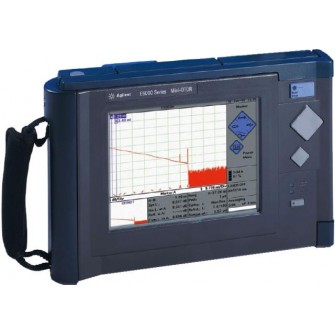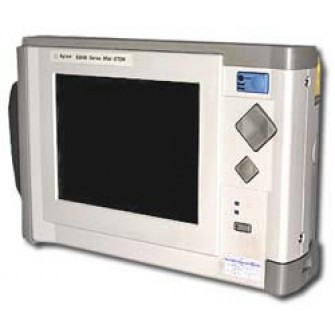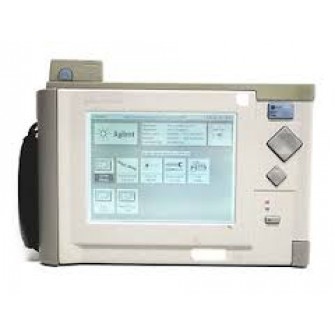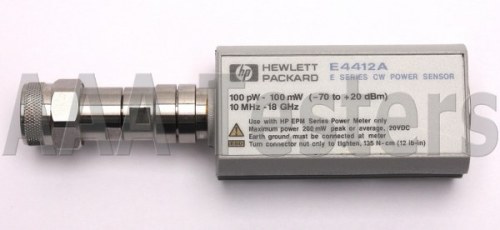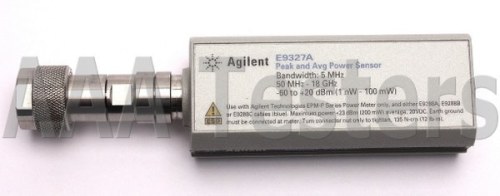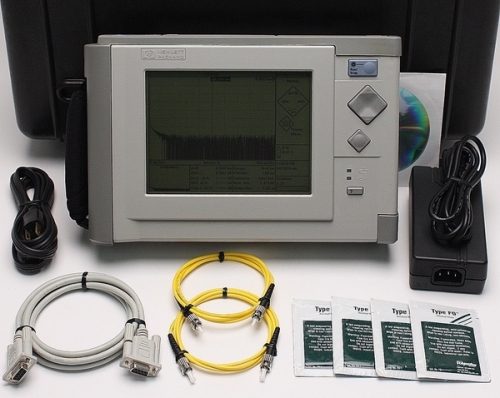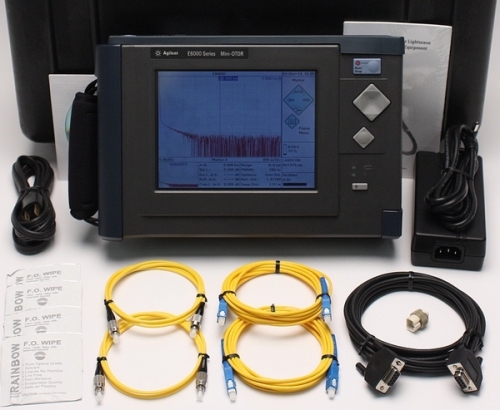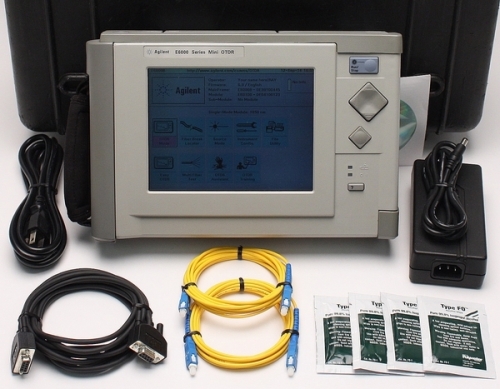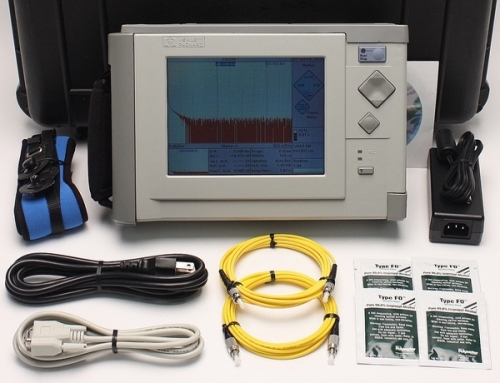If you’re looking to Sell Agilent HP E6000C E6003C SM Long Haul Fiber OTDR
The Agilent Mini-OTDR is the best selling product in Agilent’s portfolio of Optical Network Test Solutions for the installation, maintenance and operation of fiber networks.
The Mini-OTDR is designed to provide its users with the fastest tool available for installing and commissioning multiple fiber links and locating faults for fiber maintenance. This is accomplished through high measurement performance and an award winning simple user interface.
Fiber Break Locator to quickly find breaks and bends.
Locate and characterize splice and connector losses.
Multifiber testing for fast high-count cable qualification.
Perform power and loss measurement with the built-in light source and the power meter module.
Graphical representation of measurement results in event tables, showing loss and reflection, and pass/fail results.
Visual Fault Finder to check patch cords for light leakage.
Characteristics:
Horizontal Parameters
Start-km:
0 km to 400 km Span: 0.1 km to 400 km
Readout resolution: 0.1 m
Minimum sample spacing: 4 cm
Refractive index: 1.00000 to 2.00000
Length unit: km, ft, or miles
Measurement points: up to 64000
Vertical Parameters
Vertical scale
0.1 to 10.0 dB/Div Read-out resolution: 0.001 dB
Reflectance range: 14 dB to 60 dB
Backscatter coefficient: 10 to 70 dB at 1 s
Pulsewidth
You can select any of the following pulsewidths: 10 ns, 30 ns, 100 ns, 300 ns, 1 s, 3 s, and 10 s (all modules). You can also select 5 ns for E6003C, 5A, 9A modules, and 20 s for E6003B, E6003C, E6008B, and E6013A.
With the E6005A module, you can select a pulsewidth from 5 ns to 100 ns at 850 nm, and from 5 ns to 10 s at 1300 nm.
With the E6009A module, you can select a pulsewidth from 5 ns to 100 ns at 850 nm, and from 5 ns to 1 s at 1300 nm.
Buying, Selling, Trading Agilent HP E6000C E6003C
Storage
3.5 floppy disk drive: for high density 720/1440 kByte floppy disks. MS-DOS format compatible. Reduced operating temperature of 5C to 45C, with 35% to 80% humidity at 40C. Memory Card: PCMCIA Type II. 440 MB with up to 13000 traces (typical with 64000 data points).
Internal memory: SRAM up to 2 MB. Up to 300 traces (typical) with 4000 data points
OTDR Trace Formats:
Trace format: compliant to the following Bellcore/Telcordia OTDR trace formats:
GR 196, Revision 1.0
GR 196, Revision 1.1
SR-4731 Revision 2.0
Trace Information: 5 comment labels of up to 15 alphanumeric characters, and 5 comment fields of up to 41 alphanumeric characters are provided for each trace.
Real-time clock and date
Scan Trace:
Type of events:
Reflective and nonreflective. Maximum number of events: 100.
Threshold for non-reflective events: 0.0 to 5.0 dB, selectable in 0.01 dB steps.
Threshold for reflective events: – 14.0 to ?65.0 dB, selectable in 0.1 dB steps.
Threshold for fiber breaks: 0.1 to 10 dB, selectable in 0.1 dB steps.
Fiber End Threshold: 0.1 to 20 dB, selectable in 0.1 dB steps.
Display Color or monochrome VGA-LCD: 18.3 cm (7.2?)
Display points: 640 x 480 Points
Measurement update rate: two measurements per second in refresh mode
Interfaces:
RS232C: Maximum transmission rate: 115200 bps Transmission time at 115200 bps for trace data: 4000 points at approx. 1 second; 64000 points at approx. 4 seconds.
Centronics: Standard parallel port (SPP).
Keyboard: PS2 (Min-DIN). For English Standard, PS2, or AT keyboard.
General:
Automatic setup analysis
Instrument settings: storage and recall of user-selectable instrument settings.
Laser safety class: All OTDR laser sources specified by this data sheet are classified as Class 1M according to IEC 60825-1 (2001).
The Visual Fault Finder Sub-Module E6007A complies with Class 2 according to IEC 60825-1 (2001).
All laser sources comply with 21 CFR 1040.10 except for deviations pursuant to Laser Notice No. 50, dated 2001-July-26
Built-in Applications:
Automatic Multi Fiber Test
Pass/Fail Test
Fiber Break Locator
Power Meter / Loss Test mode 1
Visual Fault Finder mode 1
Optical Return Loss
End to End Loss
Easy OTDR
OTDR Training
OTDR Assistant
Environmental
Operating Temperature: 0 to 50 degees C Storage Temperature: 40 to +60 degrees C
Humidity: 95% R.H from 0 to 40 degrees C
Power
AC: 100 240 Vrms
10% 50 60 Hz DC: 16 24 V
External Battery: NiMHtypically 8 hours continuous operation (minimum 4 hours) with Option #006. Charging time < 3 hours, non-operating
Low battery indicator
Battery charge status
Agilent E6003C SM OTDR Module
Central Wavelength 1310 nm ± 25 nm / 1550 nm ± 25 nm
Applicable Fiber single-mode
Pulsewidth
20 µs
Dynamic Range [dB] 43/41
Event Deadzone
1.5 m
Attenuation Deadzone 8/10 m
If you’re selling your Agilent HP E6000C E6003C please fill out form on the right hand side of page.
